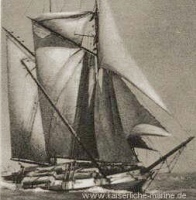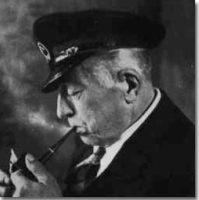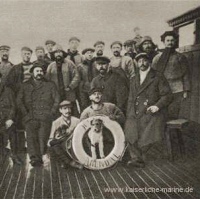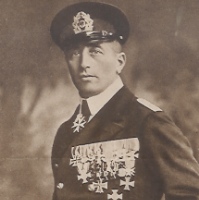
A visitor takes picture of a sculpture “Nude No. 2” by China’s artist Mu Boyan
at the Hong Kong International Art Fair in Hong Kong Wednesday, May 13, 2009. (AP Photo/Kin Cheung)

Prora is a beach resort on the island of Rügen, Germany, known especially for its colossal Nazi-planned touristic structures. The massive building complex was built between 1936 and 1939 as a Kraft durch Freude (KdF) project. The eight buildings are identical, and while they were planned as a holiday locale, they were never used for this purpose. The complex has a formal heritage listing as a particularly striking example of Third Reich architecture.
Prora is an extensive bay between the Sassnitz and Binz regions, near Prorer Wiek, on the narrow heath (called the Prora) which separates the Jasmunder Bodden from the Baltic Sea. The buildings extend over a length of 4.5 km and are roughly 150 m from the beach. The coast offers a long flat sand beach, which stretches from Binz to the Fährhafen. This beach was thus an ideal location for the establishment of a seaside resort.
Dr. Robert Ley envisioned Prora as a parallel to Butlins - British "holiday camps" designed to provide affordable holidays for the average worker. Prora was designed to house 20,000 holidaymakers, under the ideal that every worker deserved a holiday at the beach. Designed by Clemens Klotz (1886-1969), all rooms were planned to overlook the sea. Each room of 5 by 2.5 metres (16'5" x 8'3") was to have two beds, an armoire (wardrobe) and a sink. There were communal toilets and showers.
Hitler's plans for Prora were much more ambitious. He wanted a gigantic sea resort, the "most mighty and large one to ever have existed", holding 20,000 beds. In the middle, a massive building was to be erected. At the same time, Hitler wanted it to be convertible into a military hospital in case of war. Hitler insisted that the plans of a massive indoor arena by architect Erich Putlitz be included. Putlitz's Festival Hall was intended to be able to accommodate all 20,000 guests at the same time. His plans included two wave-swimming pools and a theatre. A large dock for passenger ships was also planned.
In late 2008, plans were approved to have Prora fill its original purpose and to turn it into a modern tourist resort. The council set out plans to build enough living space to house 3000 people, as well as a youth hostel, and amenities for tourists. Kerstin Kassner, a local counciller, compared Prora's shore with a "Caribbean beach." However, the decision met with some skepticism from Binz locals, who felt that there were already too many tourists in the region, and Heike Tagsold, a Prora historian, who said that the town's past made it an inappropriate location for tourists.





 Respecting Felix's honor they didn't.
Respecting Felix's honor they didn't. Far from it: after writing a book about his various adventures, Felix von Luckner toured the world entertaining audiences about the Seeadler – as well as demonstrating his strength by tearing phone books in half and bending coins between thumb and forefinger.
Far from it: after writing a book about his various adventures, Felix von Luckner toured the world entertaining audiences about the Seeadler – as well as demonstrating his strength by tearing phone books in half and bending coins between thumb and forefinger.





The first known modern case of a human hit by a space rock occurred on 30 November 1954 in Sylacauga, Alabama. There a 4 kg stone chondrite crashed through a roof and hit Ann Hodges in her living room after it bounced off her radio. She was badly bruised. The Hodges meteorite, or Sylacauga meteorite, is currently on exhibit at the Alabama Museum of Natural History.
Max Headroom (1987–1988) is a short-lived but ground-breaking British-produced science fiction television series by Chrysalis/Lakeside Productions made for American TV. The series was based on the Channel 4 British TV pilot Max Headroom: 20 Minutes into the Future. The series is often mistaken as an American-produced show due to the setting and its use of an almost entirely US cast along with being broadcast in the USA on the ABC network. Cinemax aired the UK pilot followed by a six-week run of highlights from The Max Headroom Show, a music video show where Headroom appears between music videos. ABC took an interest in the pilot and asked Chrysalis/Lakeside to produce the series for US audiences. The show went into production in late 1986 and ran for six episodes in the first season with eight being produced in season two. Although each story was self-contained, most of season one was aired in the wrong order as Body Banks follows on from Blipverts which is obvious from the dialogue.
In 1987, the story told in 20 Minutes into the Future, a made-for-television movie, formed the basis of a fully-fledged drama television series. The film was re-shot as a pilot program for a new series broadcast by the U.S.-based ABC television network. The pilot featured plot changes and some minor visual touches, but retained the same basic storyline. The only original cast retained for the U.S. version series were Matt Frewer (Max Headroom / Edison Carter) and Amanda Pays (Theora Jones); a third original cast member, W. Morgan Sheppard, joined the series as "Blank Reg" in later episodes. Among the non-original cast, Jeffrey Tambor co-starred as "Murray,” Edison Carter's neurotic producer.
The series is set in a futuristic dystopia ruled by an oligarchy of television networks. Even the government functions primarily as a puppet state of the network executives, serving mainly to pass laws — such as banning off switches on televisions — that protect and consolidate the networks' power. Television technology has advanced to the point that viewers' physical movements and thoughts can be monitored through their television sets; however, almost all non-television technology has been discontinued or destroyed. The only real check on the power of the networks is Edison Carter, a crusading investigative journalist who regularly exposes the unethical practices of his own employer, and the team of allies both inside and outside the system who assist him in getting his reports to air and protecting him from the forces that wish to silence or kill him.
The series began as a mid-season replacement in spring of 1987, and was sufficiently popular to be renewed for the fall television season, but the viewer ratings could not be sustained, due to direct competition with CBS's Top 20 hit Dallas and NBC's Top 30 hit Miami Vice, and Max Headroom was canceled part-way into its first broadcast season; leftover episodes aired in spring 1988. Plans for a cinema version titled Max Headroom for President were mentioned in the media, but the film was never produced.
Comico comics also had plans to publish a graphic novel based on the story, but never fulfilled them. A few posters were produced for comic shops, with a picture of Max Headroom saying comics will never be the same again.
The Max Headroom broadcast signal intrusion incident was a television signal hijacking in Chicago, Illinois, on the evening of November 22, 1987; it is an example of what is known in the television business as broadcast signal intrusion. The intruder was successful in interrupting two television stations within three hours. Neither the hijacker nor the accomplices have ever been found or identified.
The first occurrence of the signal intrusion took place during WGN-TV (channel 9)'s live telecast of its primetime newscast, The Nine O'Clock News. During Chicago Bears highlights in the sports report, the station's signal was interrupted for about half a minute by a video of a person wearing a Max Headroom mask, standing in front of a swaying sheet of corrugated metal, which imitated the background effect in the Max Headroom TV and movie appearances. There was no audio, only a buzzing noise. The hijack was stopped after engineers at WGN switched the modulation of their studio link to the John Hancock Center transmitter.
The incident left sports anchor Dan Roan flustered, saying, "Well, if you're wondering what happened, so am I."
Later that night, around 11:15 p.m., during a broadcast of the Doctor Who serial Horror of Fang Rock, PBS station WTTW (channel 11)'s signal was hijacked using the same video that was broadcast during the WGN-TV hijack, this time with distorted audio. The person in the Max Headroom mask appeared, as before, this time saying, "That does it. He's a freakin' nerd," before laughing and jeering, "Yeah, I think I'm better than Chuck Swirsky. Freakin' liberal."
The unidentified man continued to utter random phrases, including New Coke's advertising slogan "Catch the Wave" while holding a Pepsi can (Max Headroom was a Coca-Cola spokesperson at the time), then tossing the can down, and making an obscene gesture with a rubber extension over his middle finger (the gesture was cut off at the bottom of the screen due to the close-up of the camera) then retrieving the Pepsi can, and saying "Your love is fading", before removing the rubber extension, then began humming the theme song to Clutch Cargo, and stating that he had "made a giant masterpiece for all the greatest world newspaper nerds" (the call letters WGN are an abbreviation for "World's Greatest Newspaper", in reference to the Tribune Company's Chicago Tribune). He then held up a glove, said "my brother is wearing the other one", and put the glove on. He then took the glove off, adding that it was "dirty."
The picture suddenly cut over to a shot of the man's lower torso. His buttocks were exposed, and he was holding the now-removed mask up to the camera while being spanked with a flyswatter by an unidentified accomplice wearing a dress, as the man exclaimed "They're coming to get me!". The transmission then blacked out and cut off, and the hijack was over after about 90 seconds.
WTTW, which maintains its transmitter atop the Willis Tower (then the Sears Tower), found that its engineers were unable to stop the hijacker. According to station spokesman Anders Yocom, technicians monitoring the transmission "attempted to take corrective measures, but couldn't". "By the time our people began looking into what was going on, it was over", he told the Chicago Tribune. WTTW was able to find copies of the hijacker's telecast with the help of Doctor Who fans who had been taping the show.